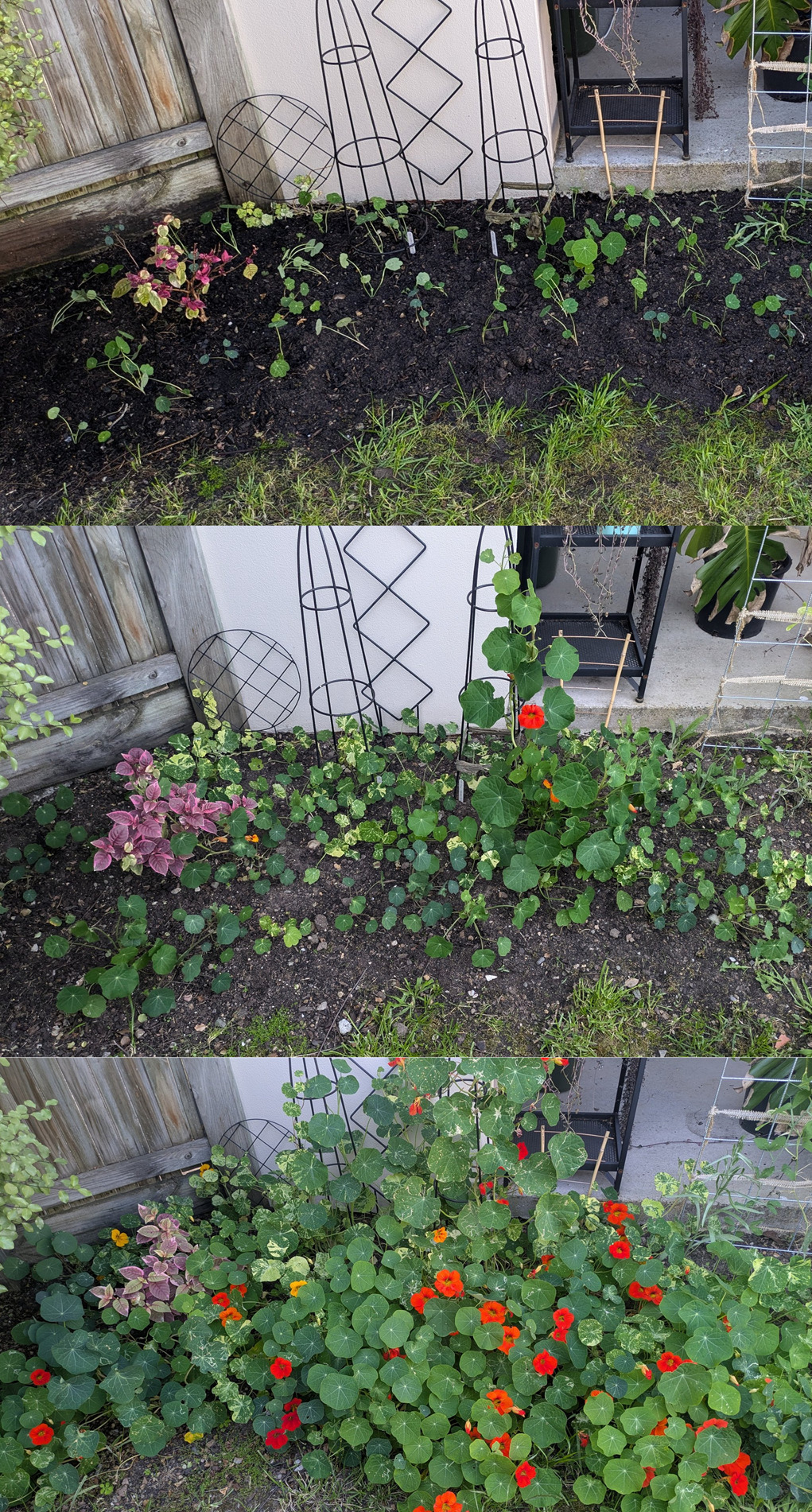#that I grew from seeds collected from LAST season's nasturtiums
Explore tagged Tumblr posts
Text

My garden's progress! Exactly one month between each photo <3
#they're all various types of Nasturtiums#that I grew from seeds collected from LAST season's nasturtiums#I'm so proud#except the pink leaf one that is a Fuchsia which I'm still surprised is alive after that winter#bless it#Not all of them are flowering yet eithe#give it 2 weeks and theres gonna be MORE#i'm also growing 3x colours of cornflowers but they're in the other garden bed#I love my plants#GREEN WITCH#mine#flowers#nastiurtum#garden
133 notes
·
View notes